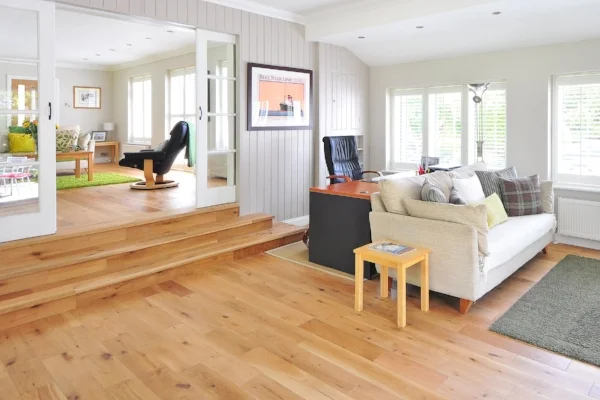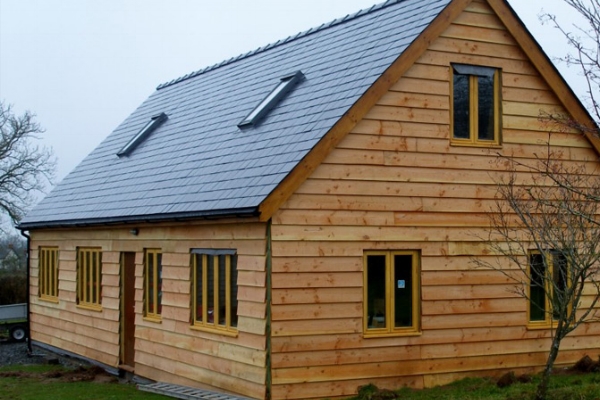General Fixing Advice
Whitney Sawmills have prepared the following technical information and fixing advice to help with the correct application of of our timber products.
If you, or your contractor, should have any concerns about fixing our flooring, decking, cladding, skirting or architrave, you should contact our office on 01497 831 656.
+ Flooring
+ CLADDING
+ DECKING
Flooring
Make sure all concrete, plaster and paint is dry before introducing the flooring to a room.
Ensure that there is no damp.
Acclimatise the flooring by stacking it in the room where it is to be fitted; leave it for two to four weeks before laying (four weeks in the winter). If the room is to have heating, make sure it is on, especially in the winter.
If you are fitting over underfloor heating we do not recomend using our stock flooring . Please speak to a member of staff about a special order of flooring dried down to a moisture content that will work better with your situation.
Always leave a 10-15mm expansion gap all the way around the edge and do not glue the edges of the boards together , so that each individual board can move on its own.
Make sure that the base to which you are fixing the flooring is dry, flat and sound.
Secure the boards to the base by nailing or screwing through the tongue or by using a recommended adhesive.
If laying the boards on joists, the ends of the floorboards must be joined on the joist..
Once laid, the floor will require filling and the sanding. Best results will be achieved by using a combination of belt sander, orbital sander and edge/corner sander.
Vacuum the floor to remove dust and then wipe the floor with a cloth dampened in white spirit.
Apply recommended floor seal with appropriate applicator in even strokes along the length of the boards.
Cladding
Most cladding boards can be fixed with nails. When using oak it is important to use stainless steel to avoid corrosion of fixings and blue staining of the wood.
Ring shank nails are preferable to normal wire nails because of their extra grip.
The length of the nail should be two and a half times the thickness of the board. The nail should penetrate the batten by at least 32mm.
Where boards are double-nailed, it is advisable to pre-drill over-sized holes to allow for some dimensional movement. In this instance it may be necessary to use fixings with larger heads.
Decking
Use a weed suppressing membrane to stop vegetation from growing up through the deck.
Space the supports or posts a maximum of 1800mm apart.
Joists should be a maximum of 400mm apart.
Leave at least 3mm gap between deck boards.
Ensure the deck frame is rigid, square and level (with a slight run off) before fitting the boards.
Use galvanised or stainless steel screws.
If you have concerns about using any of our products, please check with the office before undertaking any fixing:





